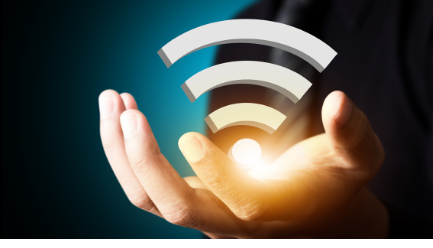RUCKUS Networks是构成康普世界领先级网络解决方案的一部分,欢迎您的咨询,了解更多信息。了解更多信息。

Wi-Fi reliability and performance
Consumers are now not satisfied to just connect with poor performance in many rooms of their home. With the pandemic turning all our rooms into work and school places, we now see the importance of high-performance Wi-Fi to every part of our homes. With the arrival of Wi-Fi 6 technology and its 15-35% boost in overall home performance over previous Wi-Fi 5 solutions, we saw a sharp growth in the roll-out of more Wi-Fi 6 access points from service providers in 2021. While legacy client devices prevail and don’t fully unleash the 4x performance improvement of Wi-Fi 6 – the importance of Wi-Fi 6 to create a new Wi-Fi foundation for the home cannot be overstated. New Wi-Fi 6 multi access point meshing solutions coupled with Wi-Fi management software solutions will also become the norm as even the smaller homes improve performance with Wi-Fi extender solutions. Reliability of these solutions needs to be controlled by cloud and consumer app-based solutions that self-heal where possible and present both the service provider support representative and the consumer the ability to solve remaining problems.
Capacity improvements on the networks to the home
We have seen more than a 50% increase in upstream traffic in the last 9 months as we work, school and live from home more. The use of video conferencing and shared cloud storage has shown how improved upstream and downstream capacity can improve our ability to compete and live in this accelerated digital economy. We expect to see more additional capacity added to DOCSIS upstream in 2021 with more use of the 204MHz capability we have in many of the solutions we have shipped. We also see an increased momentum to shift from 1Gbps GPON solutions to 10Gbps XGS-PON to be prepared for future services.
Service providers moving to be the super aggregator of home services
Aggregated Streaming Services
This past year saw ever more consumption of OTT video streaming services, with lock-down binge viewing and movies going straight to streaming. With ever-more OTT service coming online, the need to aggregate these services and simplify the consumer experience grows. While service providers have integrated streaming services with their own Pay TV offerings for a while, there will be increased focus on addressing the broadband only customer with operator-supplied streamers. A move that will accelerate the shift by cable operators from QAM-based video delivery to all IP-video services in the home.
Smart Assistants
With smart assistants maturing to a point where they can now be added as a S/W integration into devices we see an acceleration of multiple assistants co-existing in a single device in the home. Solutions like the Voice Interoperability Initiative (VII) are breaking down the technical and user interface barriers to allow a service provider smart assistant to work cohesively with all the commercially available ones. With consumers also worried about their privacy with smart assistants there will be increased focus and innovation to address this, helping consumers get comfortable and drive further adoption of digital assistants.
IoT Services
With the momentum of the Connected Home over IP group (CHIP) and their work we expect to see this effort result in the ability for a single hub in the home to create IP connection for all IoT services and applications. This will remove some of the fragmentation and deployment issues of smart home solutions and simplify the user experience. It also provides a unique opportunity for the service providers to provide the home IoT aggregation function for all home services.
New Home Solution Services
Service providers have long waited for the opportunity to be able to push new services to the devices they have invested in and deployed to consumer homes. Next year will see the emergence of platforms capable of deploying new services from the cloud such as IoT, security, smart assistants and low latency on an on-demand basis in a standardized, easy to deploy framework. This will drive innovation and revenue growth opportunities for service providers.
Whole home and every room media consumption will also normalize on the service provider platforms with every room capable of accessing all media from audio services to video services with simple device additions to each room providing a whole home and cross home experience.
Virtual doctor visits, telemedicine and aging in place are three of the areas that have seen huge acceleration in investment as we move towards more digital and technology solutions for the home versus having to traveling to the doctor’s office during a pandemic.
Moving towards more reliable deterministic and low latency services
It would have been hard to miss the announcements this year on the allocation of 6GHz spectrum to unlicensed use. With the United States and other countries allocating as much as 1.2GHz of spectrum unlocking 66Gbps of wireless potential for use in the home. With the creation of the Wi-Fi 6E and first products available to use this newly approved spectrum, we will see new products in 2021 that will use this huge capacity of spectrum for an array of applications. We expect Wi-Fi 6E to hit its stride more in the 2022 and 2023 timeframe as the spectrum is released around the globe and clients and applications start to arrive.
With this new 6GHz spectrum also comes determinism of performance on Wi-Fi for the first time – matching that of a wired connection. Co-incidentally, for those on DOCSIS networks, the addition of low latency DOCSIS support aligns with this new Wi-Fi 6E capability to drive a deterministic and low latency service to the home. We expect to see new revenue generating use cases emerge on this ultra-low latency determinism from “no excuses best latency gaming” to providing the underpinning platform for latency intolerant AR and VR experiences. Knowing your latency score on your network will become as important as the bandwidth from your service provider.










